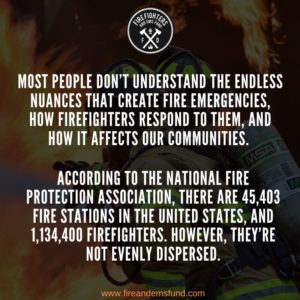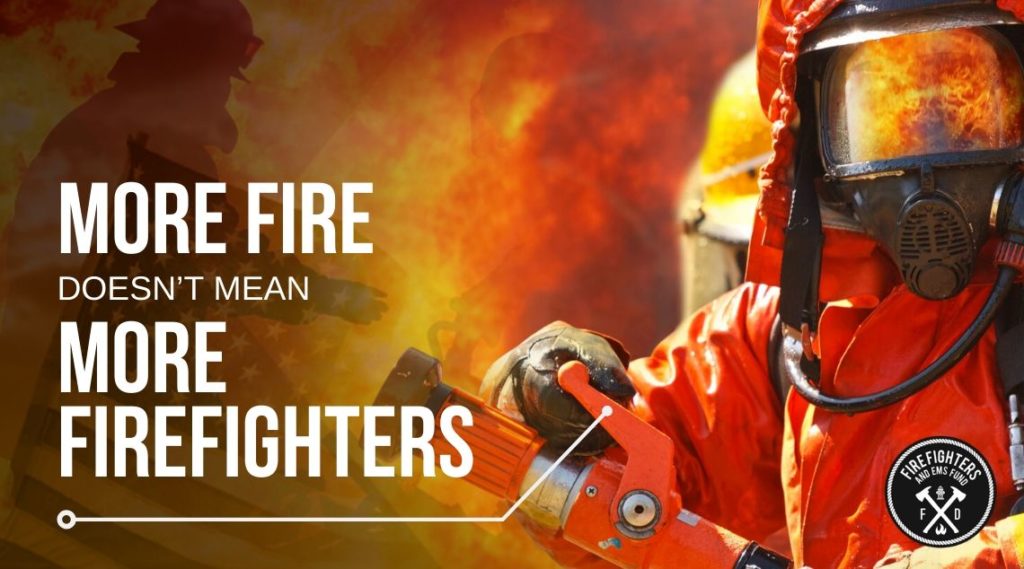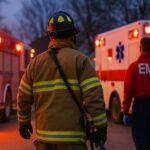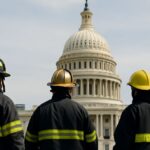When it comes to fire safety, a simple formula reigns true: The more firefighters in a certain area, the safer that community tends to be. It seems easy to then add more fire departments to areas that require them, like cities that historically have seen more fires or with bigger populations. But what most people don’t understand are the endless nuances that create fire emergencies, how firefighters respond to them, and how it affects our communities.
According to the National Fire Protection Association, there are 45,403 fire stations in the United States, and 1,134,400 firefighters. However, they’re not evenly dispersed. While jurisdictions in states like Idaho, Montana, and Nevada employ around 5,000 firefighters, California,Texas, and New York employ almost 12 times that, with New York tipping the scale at 86,000 total firefighters. While some states naturally attract more firefighters due to sheer population size, (California, New York, and Texas hold the largest populations in the US), the Northeast employs more firefighters than any other region*. Unfortunately, the majority of fire emergencies aren’t happening in these states.
According to Michael J. Karter Jr.’s report “U.S. Fire Experience by Region”, the number of fires between 2007 and 2011 indicate that the South and Midwest had the highest overall rates, with 5.4 fires per thousand people. Meanwhile, the Northeast only experienced 4.6 fires per thousand people, and the West, with 3.4, had the lowest rate. There are several factors that contribute to the number of fires experienced by region, and population size is just one of them.

The National Fire Protection Association identified several factors that increase the likelihood of fires: poverty, living in a rural area, adult smokers, people living with disabilities, and being over the age of 80. According to their report on fire death rates by state, “these risk factors are correlated with each other and tend to explain some of the same variations in state fire rates. A state that ranks high in one or more of these risk factors could be expected to rank higher in state fire rate, and a state that ranks low in risk factors could be expected to have a lower state death rate. For example, West Virginia, Mississippi, and Arkansas are all among the highest 10 states on at least four of the major risk factors and had the three highest average state fire rates. Hawaii, California, and Utah were in the lowest 10 states on at least three of the major risk factors and had the lowest fire rates.”
A large reason why Southern and Midwestern states can’t get more firefighters is lack of funding. There is no set geographical formula for the distribution of fire grants—fire departments throughout the nation apply, and award decisions are made by a peer panel based on the merits of the application and the needs of the community.
Other ways fire departments are awarded funding is by applying for grants themselves, that are then set to vote on by the public. The 2018 Fire Referendum Report by Firefighters and EMS Fund highlighted that the area that received the most pushback from voters were requests for funds to build, staff, and maintain new fire stations, failing nearly 60% of the time. Without grants and support from local communities, the areas of the country that desperately require more firefighters will continue to go without.
And the need for firefighters only continues to grow. The NFPA stated that despite the decline in reported fires, fire department responses have nearly tripled from 11,888,000 total incidents in 1985 to 33,602,500 in 2015. Almost two-thirds of fire department responses were medical aid or rescue calls. During 2015, U.S. fire departments responded to 21,500,000 calls involving emergency medical services (EMS), medical assistance, and non-fire rescue. The diverse responsibility of the fire service puts the entire population at risk if they are unable to do their jobs.
The states where the most fire incidents occur are not the states with the most firefighters. This discrepancy causes fire deaths and medical emergencies every year. In order for firefighters to properly serve their communities, they need proper funding that will allow them to build and staff new fire stations, while also maintaining current equipment and technology.









